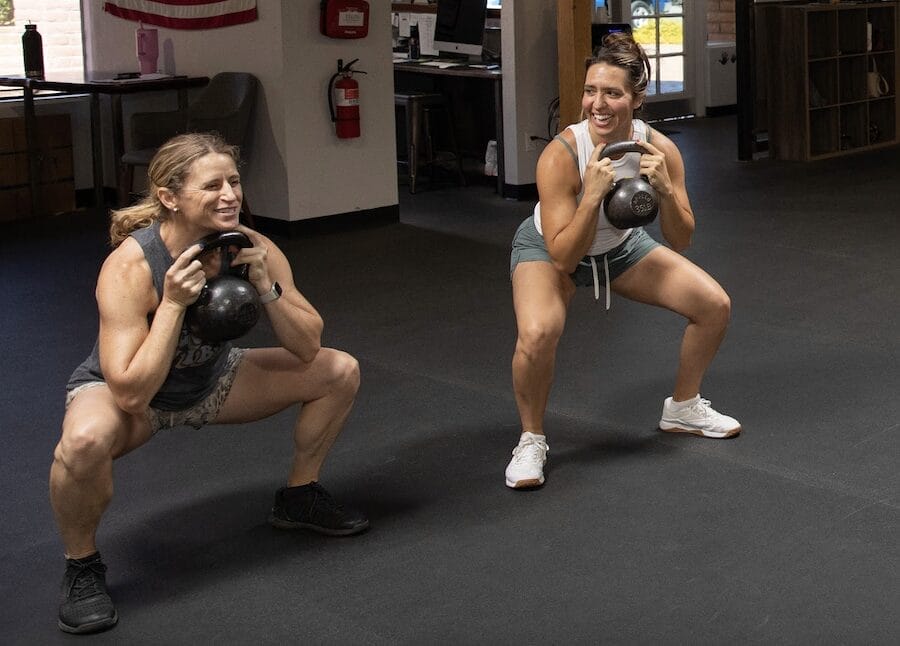
Why Creatine Should Be on Your Radar
If you’ve been part of the Telos Strength & Conditioning community for a while, you’ve probably heard us talk about creatine—and for good reason.
It’s one of the most researched and proven supplements for improving strength, recovery, and even cognitive function.
Yet despite decades of scientific backing, many people—especially women—still hesitate to take it. Why?
Because the internet is full of outdated, misleading, and downright wrong information about creatine.
Today, we’re cutting through the noise. I’m going to break down the top 5 creatine myths I hear from clients, share the real science behind it, and give you clear, actionable steps so you can decide whether creatine belongs in your health and fitness routine.
Quick takeaway: Creatine isn’t a “bodybuilder” supplement. It’s a foundational tool for strength, longevity, and confidence—whether you’re training for a 5K, chasing kids around, or staying strong into your 60s.
Myth 1: Creatine Makes You Bulky
Fact: Creatine helps increase lean muscle and definition, not bulk.
This myth probably comes from the fact that creatine pulls water into your muscle cells—not under your skin. The result? Muscles that look fuller, firmer, and more defined.
When paired with strength training (see our Personal Training programs), creatine can help you achieve the “toned” look so many women are after.
Action Step: If you want to look leaner and stronger, aim for 3–5 grams of creatine monohydrate daily while following a consistent resistance training program.
Myth 2: Creatine Is Only for Men
Fact: Women benefit just as much—if not more—from creatine.
Creatine supports:
- Muscle preservation (especially important as we age)
- Strength maintenance
- Bone density (key for reducing osteoporosis risk)
- Mood and cognitive function (emerging research shows promising results in women)
For women in their 30s, 40s, 50s, and beyond, creatine is a simple, low-cost way to protect your strength, independence, and quality of life.
Action Step: If you’re a woman who wants to stay active, prevent injury, and feel confident in your body for years to come, creatine is worth considering. Pair it with our 60+ Training Program or our group classes for even greater benefits.
Myth 3: You Have to Load and Cycle Creatine
Fact: You don’t need to “load” or “cycle” off creatine.
Old-school advice suggested taking large amounts (loading) for a week, then cycling on and off. But research shows you can get the same benefits simply by taking a consistent, moderate daily dose.
The best approach: 3–5 grams of creatine monohydrate every single day, no matter if it’s a training day or rest day.
Action Step: Make creatine part of your daily routine—just like brushing your teeth. Take it at the same time each day (morning coffee is an easy anchor habit).
Myth 4: Creatine Is Bad for Your Kidneys
Fact: Creatine is safe for healthy individuals.
Multiple long-term studies have found no harmful effects on kidney function in healthy adults. The kidney damage myth stems from misinterpreted lab results—creatine increases creatinine levels, but that’s not the same as harming kidney function.
If you have a pre-existing kidney condition, consult your doctor before starting creatine. For the majority of healthy people, the risks are extremely low.
Action Step: Combine creatine use with adequate hydration and a balanced diet for best results. (Here’s how much water you really need).
Myth 5: If I Don’t Lift Weights, I Don’t Need Creatine
Fact: Creatine supports more than just heavy lifting.
While creatine is fantastic for strength and muscle gains, it also helps with:
- Energy production (think hiking, rucking, or tennis)
- Recovery from any physical activity
- Brain health and mental clarity
- Mood regulation
Whether you’re training hard, walking daily, or just want to feel better in everyday life, creatine can give you an edge.
Action Step: Even if your workouts are moderate, creatine can improve your results and help you recover faster—making it easier to stay consistent.
Bonus: What Kind of Creatine Should I Take?
Stick to creatine monohydrate—it’s the most researched, effective, and affordable form.
Avoid:
- “Advanced” creatine blends (they’re often overpriced without proven extra benefits)
- Flavored versions with unnecessary additives
- Creatine ethyl ester or other forms with limited research
Look for third-party tested brands to ensure purity and safety. At Telos, we stock Thorne Creatine Monohydrate, the same one our coaches use.
Action Step: If you want us to set one aside for you, contact us here or ask at the front desk. We sell it for the same price you’d find online—without the shipping wait.
How to Start Creatine Today (In 3 Simple Steps)
- Get the right product – Choose a pure creatine monohydrate from a reputable brand.
- Take 3–5g daily – Mix into water, coffee, or a smoothie. No loading, no cycling.
- Pair with consistent training – Combine with resistance training for the best body composition and performance improvements.
The Bottom Line
Creatine is one of the simplest, safest, and most effective supplements you can take to support strength, recovery, and overall health—especially for women.
Forget the myths. Trust the research. And if you want help making creatine (and training in general) work for your lifestyle, we’re here to guide you every step of the way.
Related Resources
